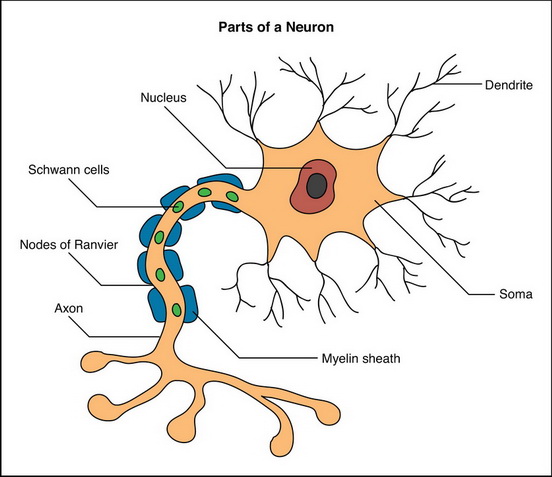PSAT Reading Practice Test 23
Questions 1-9 refer to the following information.
The diagram below provides information about the parts of a neuron (brain cell). Study the image and read the related to answer questions.

What happens when you walk barefoot
from the swimming pool onto a section
of sun-baked pavement? Ouch! The soles
of your feet burn, and you might start
05to hop up and down and then quickly
scamper away to a cooler, shaded spot
of ground. What happened?
Thank specialized cells . . . .
Networks of connected cells called neurons
10make up your body's electrical, or
nervous, system. This system works to
communicate messages, such as, "Quick,
move off the hot pavement!" Cells of
the nervous system (specifically neurons)
15possess special features and a
unique shape, both of which suit
them for their job in communication.
Or, as scientists like to put it,
structure determines function.
20Neurons have long, spindly extensions
called axons that carry electrical
and chemical messages. These messages
convey information to your brain—"The
ground is burning hot!"—and responses
25back from the brain—"Pick up your foot!"
To transmit these messages, charged
particles (primarily sodium ions), jet
across a nerve cell membrane, creating
an electrical impulse that speeds down
30the axon. When the electrical impulse
reaches the end of the axon, it
triggers the neuron to release a chemical
messenger (called a neurotransmitter)
that passes the signal to a neighboring
35nerve cell. This continues until the
message reaches its destination, usually
in the brain, spinal cord, or muscle.
Most neurons can convey messages very
fast because they are electrically
40insulated with a fatty covering called
myelin. Myelin is formed by Schwann
cells—one of the many types of glial
cells that supply support and nutrition
to nerve cells.
45Nerves coated with myelin transmit
messages at a speed of about 250 miles
per hour, plenty of time for the message
to get to your brain to warn you to
lift your foot before it burns.
50One reason young children are at a
higher risk for burning themselves is
because the neurons in children's bodies
do not become fully coated with myelin
until they are about 10 years old. That
55means it takes dangerously long for
a message like, "The stove is hot!"
to reach a young children's brains to
tell them to pull their hands away.
Myelin formation (and consequently the
60conduction of nervous system messages)
can be disrupted by certain diseases,
such as multiple sclerosis. Symptoms
such as numbness, double vision, and
muscle paralysis all result from faulty
65nerve conduction that ultimately impairs
muscle cell function.
The text is from the U.S. National Institute of General Medical Sciences.